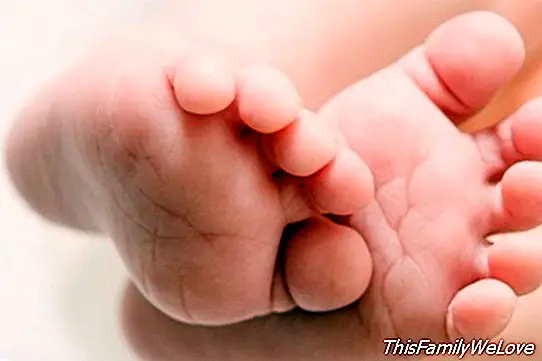Abnormalities in the feet of children


The feet must be strong and resistant to get a good propulsion and also, flexible enough to adapt to the ground they tread. Hence the importance that they are in good health and that there are no anomalies in the feet of children. The most common anomalies that children usually present in their first years of life are flat feet, valgus foot and clubfoot.
Detecting these anomalies in children's feet on time is essential for children to learn to walk properly and wear a suitable type of footwear that does not cause injuries.
Types of abnormalities in babies' feet
At the time of birth, the pediatric examination can easily detect three types of anomalies in the feet of congenital children: feet talovalgos, metatarsovaros and equinovaros or zambos feet.
- The talovalgo it manifests as an exaggerated laxity of the foot joint with the leg that allows hyperflexion (with the fingers it is possible to touch the anterior part of the leg) and a lateralization of the heel outward, in valgus. It does not need treatment but there is the possibility that it will develop flatfoot later.
- The metatarsus varus (Placement of the anterior part of the foot inwards) are corrected with manual maneuvers, although in rebellious cases corrective splints must be used.
- The equinovar feet (zambos feet) require early treatment.
- More or less fingers. A malformation that, due to the possibility of causing problems with the footwear, should be solved before our baby begins to walk, is polydactyly (presence of one extra finger). Syndactyly (joined fingers) only causes a problem of aesthetics.
The clubfoot of children
The equinovar feet or clubfoot is an anomaly in the feet of children that constitutes one of the most frequent congenital skeletal deformities, in proportion of 1 to 2 per 1,000 births. They appear with double presence in children than in girls. In 50 percent of cases it is bilateral.
It is a malposition very easy to detect. The foot is turned inward, with the plant also facing inward. The treatment must be very early, with mobilizations the first week of life in which manual reduction is possible. At 10-15 days should be applied, or a corrective splints to be worn 24 hours a day or corrective plasters.
The treatment should continue for months and observation for years due to the tendency to relapse. In cases where treatment has been initiated too late or in very difficult cases, surgical interventions are necessary.
The flat foot of children
The flat feet they constitute the anomaly in the feet of children acquired more frequent. In it the foot loses its central curve, the bridge, and the heel is inclined in valgus, that is, it falls towards its inner edge. This defect prevents the weight of the body from falling on a heel well implanted in the floor and is the main cause of pain when walking.
During the first 4 years of life, flat feet can be considered non-abnormal, without requiring treatment. Only when the heel appears with an accentuated valgus will it be indicated to place an internal wedge in the heel of the shoes to get the back of the foot to rest vertically. After 4 years, if there is no improvement, a template will be indicated. Upon reaching puberty, most infant flat feet have normalized. Only in exceptional cases is a surgical intervention indicated.
Watch the children's posture
1. It is also important to monitor the way you sleep and sit on the floor. Sleeping upside down, (position nowadays forbidden by the Spanish Association of Pediatricians because of the danger of sudden infant death) was the cause, depending on whether the feet were placed in internal rotation or external rotation, that during the walk they also appeared those vicious habits. The best way to sleep is on the side.
2. Sitting badly can also condition the position of the feet. Sitting with the thighs rotated inwards and the legs bent at the knees, separated on either side of the body (M-shaped) leads to the rotatory perpetuation of the feet. Therefore, it is advisable to correct these forms from the first moment the baby can sit. A good posture is in the shape of an "Indian" (with crossed feet), a posture that keeps the back straight.
Teresa Pereda
Adviser: Dr. Joseph Mª Casasa, Pediatric surgeon
- Baby shoes, five fun models to learn to walk
Video: Baby feet and legs...what to expect as kids progress to walking




